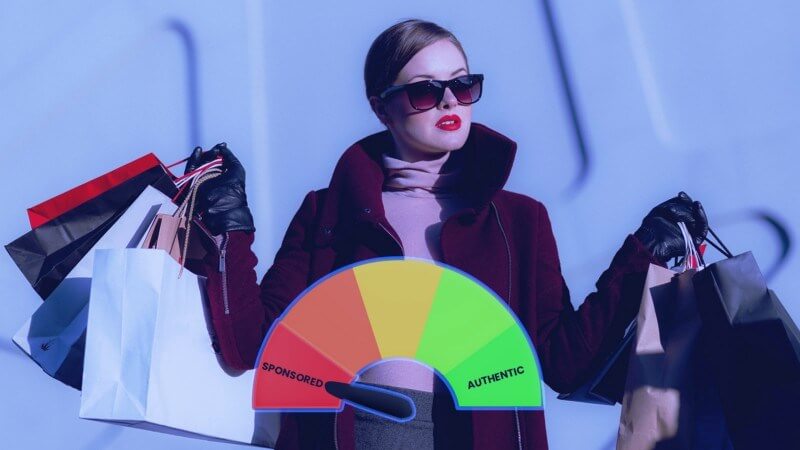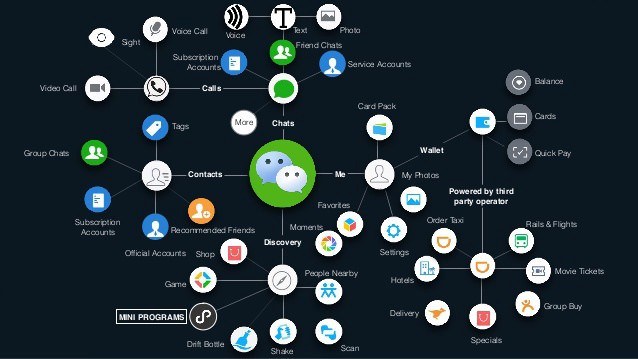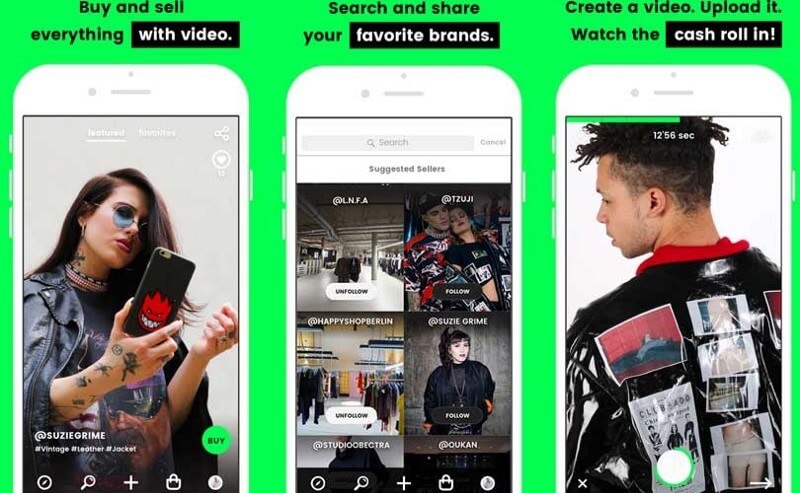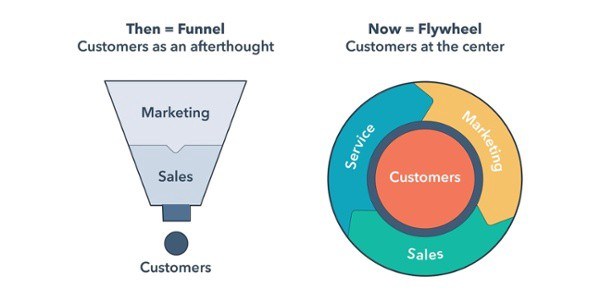The future of marketing hangs in the balance, as social platforms have become vulnerable to coordinated interference. We’re covering marketing trends to help navigate.
Facebook’s stock on the New York Stock Exchange went down nearly 30%. Meanwhile consumers on the internet are moving quickly to video channels and sharing experiences in micro video “stories”. How far will this trend continue? Keep reading.
In this article I want to talk about some of the trends we are seeing in 2021 and heading into 2022.
1. The Rise of Micro Video
Instagram’s popularity is serving as visual marketing pivots into micro video based stories. This is also happening with Chinese apps such as Tik Tok (Douyin), and a major rise in live-streaming apps, including “mini-programs” in leading Chinese apps.
Stories have been so successful on Facebook’s family of apps, they believe it will overtake the traditional feed. For retail and apparel, YEAY is the leading video-based recommendation engine for GenZ specifically where young consumers show their vibe and shop their style.
2. GenZ as the New Normal for Referral Traffic
Younger Millennials and the GenZ cohort are showing a new level of creativity and entrepreneurship online. From YouTube channels, Snapchat natives, Influencer marketing, the globalization of Instagram, Twitch/Mixer game streaming, E-sports — GenZ are changing the shape of the internet. Brands need to pivot along with them.
 Sponsored content and Ads in-between stories is filling up our feeds. Is there a better way?
Sponsored content and Ads in-between stories is filling up our feeds. Is there a better way?
3. Blockchain Alternatives
Just as digital assets are providing an alternative for investing in a more decentralized future, blockchain protocols will give marketing and advertising a new way of thinking where where the Future of Marketing is Ad-Free. While this sounds radical, new incentives and more transparency will allow brands, consumers and agencies all to benefit from more trustworthy interactions and platforms online.
The theme of Ad-free experiences that are 5G and integrate things like Augmented reality and more personalized experiences but on blockchains should continue building momentum.
4. Sales Funnel to Flywheel Customer Centricity
Hubspot speaks how marketing has shifted from a standard funnel model to a more dynamic and fluid ecosystem approach.
Placing customers at the center means consumer peer-to-peer content has much greater relevance to actual sales, brand impressions and advertising ROI. Thus the evolution of user-generated-content, word-of-mouth and influencer marketing in a video-centric era of 5G phones and blockchain is considerably different.
 The Voice-AI interface may soon be one major way brands reach consumers.
The Voice-AI interface may soon be one major way brands reach consumers.
5. Voice-AI Personal Assistants and the Hands Free Internet
Smart speakers are changing how consumers interact with the internet. Alexa, Google Home, Alibaba, Apple, Xiaomi among others are showing how a 5G world will also be one more integrated with artificial intelligence and even more convenience outside of apps altogether.
The rise of Voice search could change the future of advertising from mobile very rapidly. Opt-in to smart speakers is taking place essentially faster than the shift to mobile did. Chinese Huawei say they want to have a smart speaker that can scale outside of China itself. Time will tell, but Alexa has a lot of skills that could one day shift how consumers are reached.
 WeChat has over 1 billion users in a single app, now with “Mini-programs” there’s yet another level of immersion.
WeChat has over 1 billion users in a single app, now with “Mini-programs” there’s yet another level of immersion.
6. Mini-Programs are Making Ubiquitous Apps More Sticky
In the debate of what comes after apps, WeChat pioneered something they call mini-programs. They are essentially sub-applications within a single app that create new ecosystems. For instance they enable to provide advanced features to users such as e-commerce, task management, coupons etc. While Tencent were the first to implement them in 2019 we’ll see Alibaba and ByteDance implement them in the race to more sticky and multi-featured apps.
7. Influencer Marketing is Maturing
Influencer marketing is becoming a major pillar in marketing budgets. Mainly since it can help target social campaigns in a more communal, viral and contemporary manner. According to Adweek, microinfluencers deliver 60% higher campaign engagement rates and those campaigns are 6.7 times more efficient per engagement than those of influencers with larger followings. Consumers are increasingly at the center of content and branded content that doesn’t optimize for this, is money not well spent.
8. Niche Platforms are Doing Ads Better
While we think of Google or Facebook when it comes to advertising, Snapchat, Twitter, Pinterest and LinkedIn are improving how they do advertising and more importantly are significant niche platforms to reach specific populations. In particular for GenZ and younger consumers, increasingly Snapchat is seen as key for reaching this audience. Brands are also starting to pivot some of their marketing spend to Amazon, where retail consumers often begin their search.
9. Video Gaming Fueling Live-Streaming
Amazon’s Twitch, Microsoft’s Mixer and even YouTube are showing the young consumer really cares about live-streaming of video games. For brands this means new opportunities and new kinds of influencers to on-board to increase brand awareness reach. Live-streaming micro influencers are gaining in popularity including E-sports personalities that are a significant opportunity for 2019 and moving forwards.
10. Digital Assets Gain in Mainstream Acceptance
With Bakkt and Fidelity Digital Asset Services branching out into the cryptocurrency market, many analysts believe this is paving the path to increased regulation that would enable the maturation of a token based economy where cryptoeconomics and token incentives impacts the future of marketing and advertising gradually. The WOM Protocol is one solution speaking to this future. One thing is for sure, Blockchain adoption and digital asset integration means crypto is coming to the future of marketing.
11. Consumers show Ad Immunity and Peer Content Preference
Millennials and GenZ are showing new levels of traditional Ad immunity. Ad blockers, lower attention spans, story centric app experiences and the rise of UGC (user-generated-content) means the way we do Ads is changing, because what was once effective is no longer so with more advertising resistant mobile natives. Younger consumers crave authenticity from brands like never before. This includes interactive experiences, in-store and real life events and educational opportunities that speak to them with their own voice.
12. The Interactive Chatbot VR Revolution that Never Was
There’s been a lot of discussion over the past few years about augmented reality, virtual reality and chatbots changing the future of consumers. Most of which doesn’t seem to have materialized. We have to recognize the future of marketing and advertising is fluid to the actual behavior of consumers. The rise of mobile advertising demonstrates this, but anticipating what comes next is not always as easy as the promise of technology.
Whether MagicLeap or Apple AR glasses or devices like Portal that could popularize Facebook Messenger AI remains to be seen, but for the time being AR, VR and Chatbots appear a bit static.
13. The Battle for the Smart Home
One place where you can always count on consumers being active is at home. Between Amazon gadgets, Apple music, Google’s Nest and the next era of consumer robotics and smart assistant integrated devices, the battle is certainly on. This has huge implications for the future of advertising and data harvesting. If Amazon will become the significant 3rd player in digital advertising as appears to be the case, it’s not just Alexa but the wide range of smart home products that makes its impact here truly special.
The race for our data and the right kind of data determines the kind of personalization they will be able to offer in the years to come. Like how Facebook created very significant targeting, the next era of AI in marketing and advertising will be even more customer-centric than ever.
14. The Maturation of Artificial Intelligence
From Facebook messenger bots to better analytics that helps brands know where their digital marketing is effective, the rise of AI in advertising and marketing is here for the long-haul. AI is also streamlining customer service and success, where according to Gartner, 25% of customer service will use chatbot technology by 2020, up from less than 2% in 2017. AI therefore is optimizing the customer experience across brands, industries, channels and products.
15. Website Traffic from Content and Reviews
To scale sales brands still need to optimize website traffic via great content and from review site search about their products and related to their solutions. Content marketing, user-generated-content, reviews and video all make up pillars of how to optimize this funnel that proves SEO is still relevant and content is still King at converting traffic into sales. While the rules keep changing, a strong mobile strategy and website still make a world of difference. This of course, includes video on landing pages and video influencers driving niche traffic that’s high quality.
16. Email and Ad-Blockers
Just when you thought Email marketing was dead and Ad-blockers were invulnerable, the story isn’t always true. What’s becoming clear for Marketers and even Advertisers is the attention economy is maturing, and GenZ as consumers has become the optimal group to study, since they represent the future of these trends. If they ignore Email and use Ad-blockers, a niche app such as Snapchat really is an easier place to reach them. Many analysts don’t believe Snapchat will survive many more years as an independent entity, it remains very close to being still the best place for Ads to target young Americans.
Honorable mention goes to:
- Personalization
- Augmented Reality
- Programmatic Advertising
- In App retention Mechanism (e.g. Netflix, Spotify, etc…)
- Gamification Hack s(e.g. “Streaks” on Snapchat)
- FOMO Video Storytelling
- Rise of mobile Video Consumption
- Decentralization and Digital Asset Incentives for Content Ecosystems
This last ones covers what we are doing at the WOM Protocol. Here the customer is even more at the center of the future of how marketing and advertising takes place. Word of mouth could become everything in a 5G world.
Do you have an idea about the future of marketing, advertising and influencer marketing?

